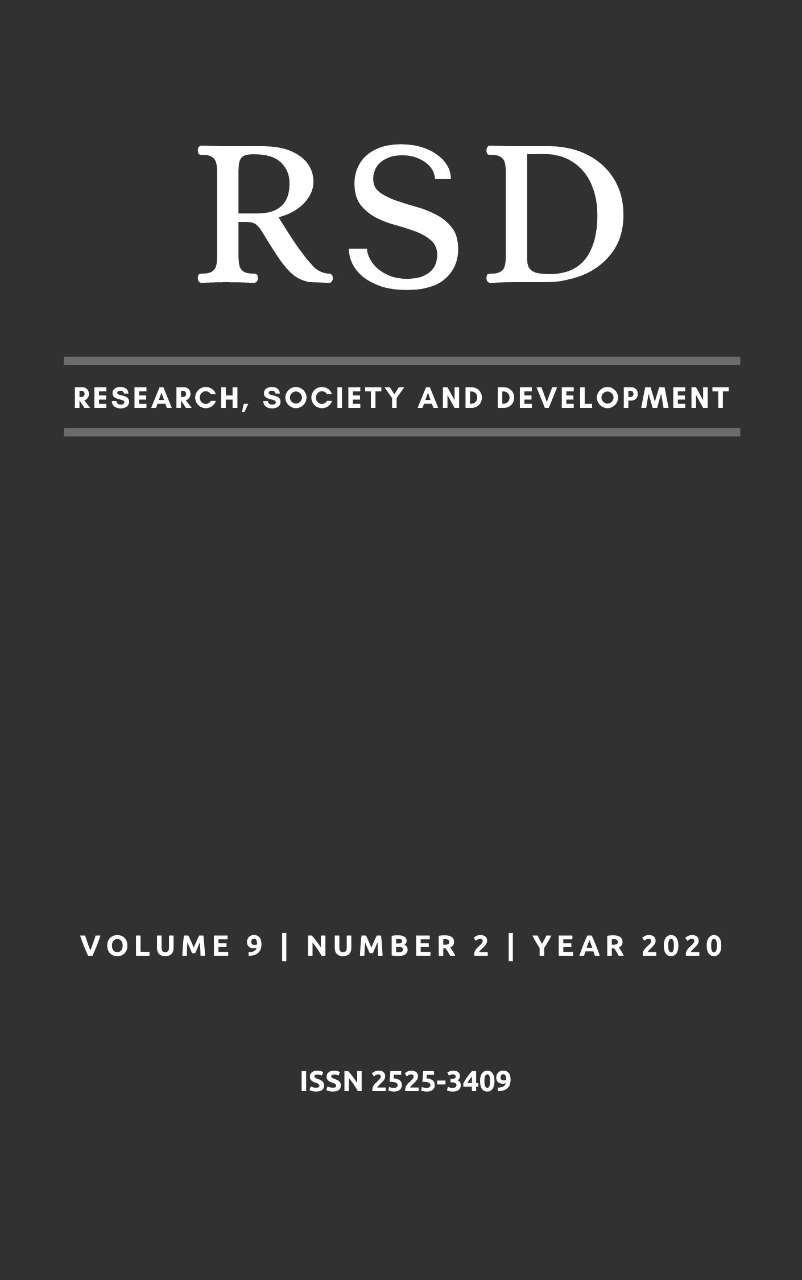Ensino-aprendizagem de cinética e eletroquímica com uso de atividades experimentais: estudo de caso no ensino superior
DOI:
https://doi.org/10.33448/rsd-v9i2.1970Palavras-chave:
grampo de aço tipo “U”, soluções eletrolíticas, corrosão.Resumo
O ensino de química gera entre estudantes uma sensação de desconforto em função das dificuldades existentes no processo ensino-aprendizagem e em muitas vezes os docentes não estão preparados para atuar de forma interdisciplinar. Diante das dificuldades, faz-se necessário a busca por metodologias de ensino que abordem o assunto de maneira contextualizada e que atraiam a atenção dos discentes. Nesta vertente, a autora buscou desenvolver uma proposta de ensino contextualizada, por meio de experimento prático, que viesse a abordar os temas corrosão e cinética, com o intuito de desenvolver nos discente o pensamento crítico. Neste contexto, o presente trabalho teve como objetivo apresentar uma metodologia de “Estudo de Caso” por meio de observação experimental da corrosão de grampo tipo “U” galvanizado e não galvanizado em diferentes soluções eletrolíticas e assim encontrar a ordem da reação de corrosão pelas leis de integração de velocidade. A pesquisa seria de natureza quali-quantitativa, pois mostra a contribuição das observações experimentais para o processo de ensino-aprendizagem ao abordar os conteúdos de cinética e corrosão, além de encontrar a taxa de corrosão e a ordem da reação. Os discentes evidenciaram que o tipo de eletrólito influencia na velocidade de corrosão. Os grampos não galvanizados estão mais suscetíveis à corrosão quando se utiliza solução de NaOH. A solução do NaCl é relativamente fraca para se corroer o grampo, e em um meio aquoso ácido, a taxa de corrosão do grampo se mostra superior. A corrosão do grampo em diferentes soluções eletrolítica segue como uma reação de ordem zero.
Referências
Atkins, P. W. & Paula, J. (2012). Físico-Química, v.2 .9 ed. Rio de Janeiro: LTC.
Behrens, M. A. (2013). O paradigma emergente e a prática pedagógica. 6 ed. Petrópolis, RJ: Vozes.
Callister Jr., W. D. (2008). Ciência e engenharia de materiais. Rio de Janeiro: LTC Editora.
Chiaverini, V. (2012). Aços e ferros fundidos. São Paulo: ABM.
Guimarães, C. C. (2009). Experimentação no ensino de química: caminhos e descaminhos rumo à aprendizagem significativa. Química Nova na Escola, 31(3).
Merçon, F.; Guimarães, P. I. C. & Mainier, F. B. (2011). Sistemas Experimentais para o Estudo da Corrosão em Metais. Química Nova na Escola, v. 33, n. 1, p. 57-60.
Pereira, A.S., Shitsuka, D.M., Parreira, F.J. & Shitsuka, R. (2018). Metodologia da pesquisa científica. [e-book]. Santa Maria. Ed. UAB/NTE/UFSM. Disponível em: https://repositorio.ufsm.br/bitstream/handle/1/15824/Lic_Computacao_Metodologia-Pesquisa-Cientifica.pdf?sequence=1. Acesso em: 01 nov. 2019.
Ruela, M. S. P. & Silveira, D. M. (2017). Corrosão de aço galvanizado em soluções ácidas. The Journal of Engineering and Exact Sciences, 3(8): 1250-1258.
Sá, L. P., Francisco, C. A., Queiroz, S. L. (2007). Estudo de caso em Química. Química Nova, 30(3): 731-739.
Sanjuan, M. E. C., Santos, C. V., Maia, J. O., Silva, A. F. A. & Wartha, E. J. (2009). Maresia: Uma Proposta para o Ensino de Eletroquímica. Química Nova na Escola, p. 190-197.
Santos, A. P.; Manhabosco, S. M.; Rodrigues, J. S. & Dick, L. F. P. (2015). Comparativestudy of the corrosion behavior of galvanized, galvannealed and Zn55Al coatedinterstitial free steels. Surface and coatings technology. 279(1): 150-160.
Silva, E. L. (2007). Contextualização no ensino de química: Idéias e proposições de um grupo de professores. Dissertação, Universidade de São Paulo.
Silva Júnior, C. N. ; Freire, M. S. & Silva, M. G. L. (2011). Dificuldades de aprendizagem no ensino de eletroquímica segundo licenciandos de química. In: VIII Encontro Nacional de Pesquisa em Educação em Ciências, 2011, Campinas. VIII ENPEC. Campinas: Abrapec, 1(1): 1-12.
Silva, M. V. F., Pereira, M. C., Codaro, E. N. & Acciari, H. A. (2015). Corrosão do aço-carbono: uma abordagem do cotidiano no ensino de química. Quimica Nova, 38(2): 293-296.
Soriano, C. & Alfantazi, A. (2015). Corrosion behavior of galvanized steel due to typical soilorganics. Construciton and building materials. 102(1): 904-912.
Downloads
Publicado
Edição
Seção
Licença
Autores que publicam nesta revista concordam com os seguintes termos:
1) Autores mantém os direitos autorais e concedem à revista o direito de primeira publicação, com o trabalho simultaneamente licenciado sob a Licença Creative Commons Attribution que permite o compartilhamento do trabalho com reconhecimento da autoria e publicação inicial nesta revista.
2) Autores têm autorização para assumir contratos adicionais separadamente, para distribuição não-exclusiva da versão do trabalho publicada nesta revista (ex.: publicar em repositório institucional ou como capítulo de livro), com reconhecimento de autoria e publicação inicial nesta revista.
3) Autores têm permissão e são estimulados a publicar e distribuir seu trabalho online (ex.: em repositórios institucionais ou na sua página pessoal) a qualquer ponto antes ou durante o processo editorial, já que isso pode gerar alterações produtivas, bem como aumentar o impacto e a citação do trabalho publicado.


